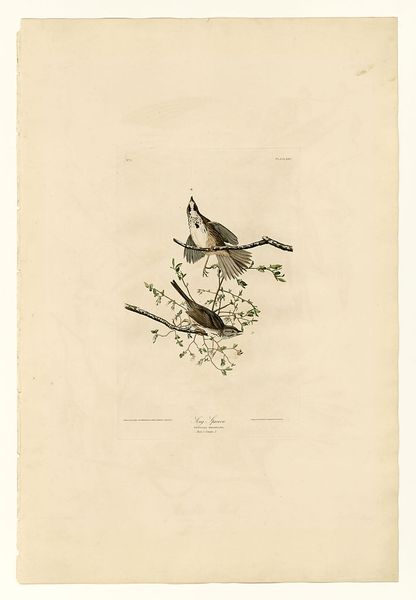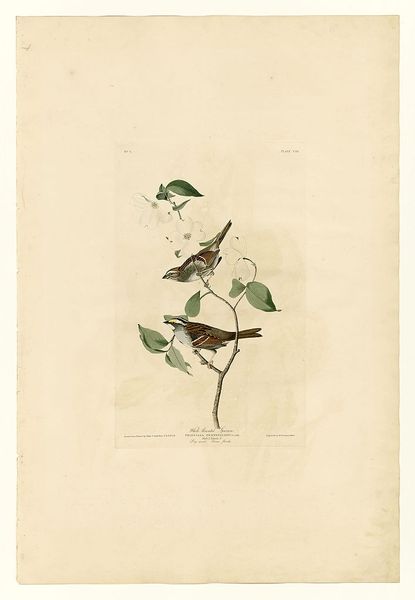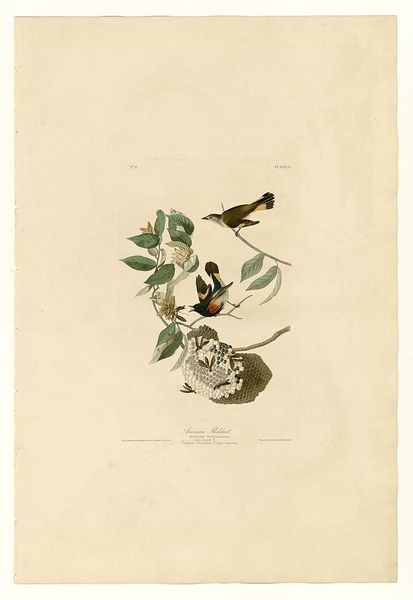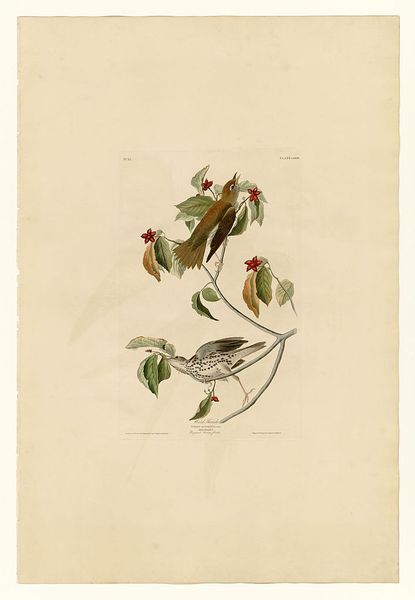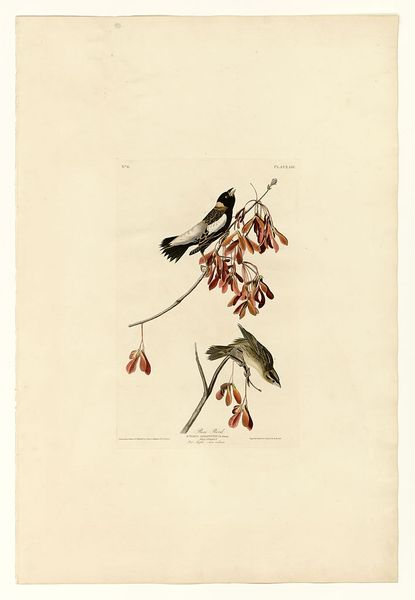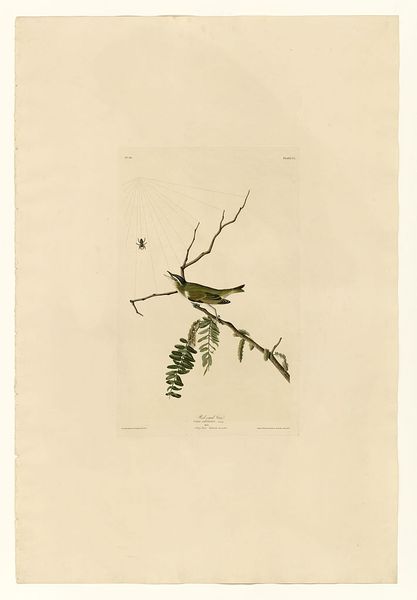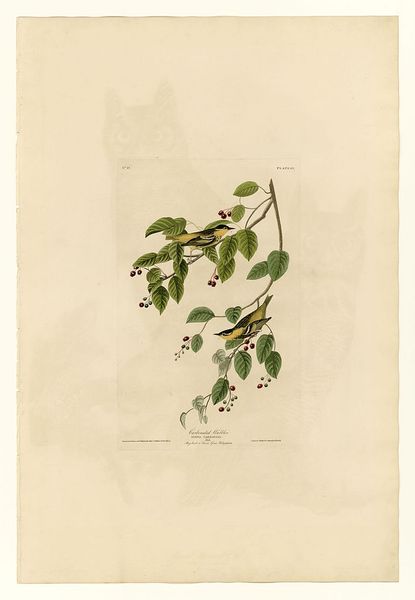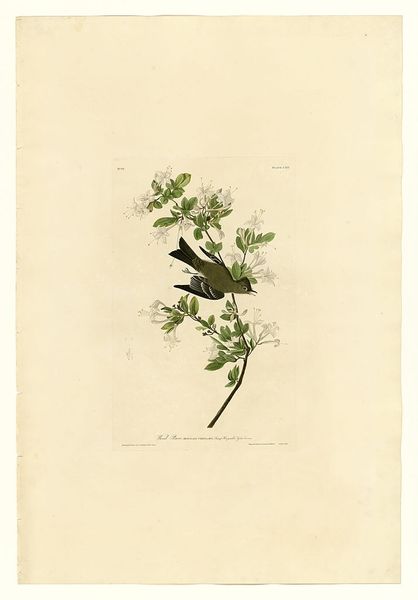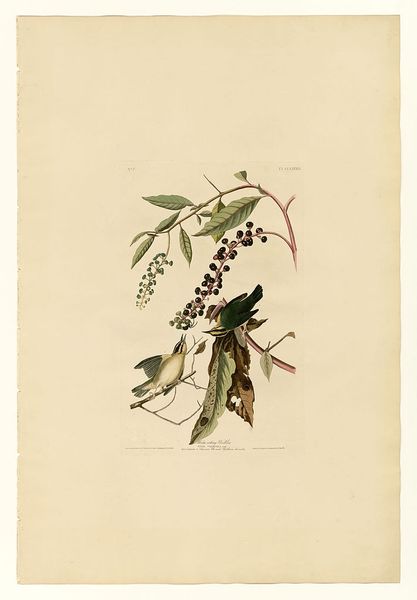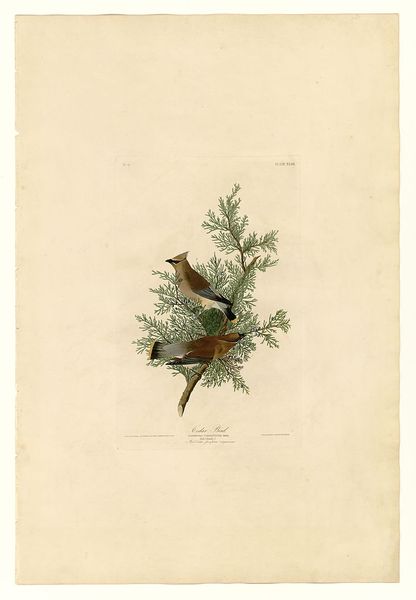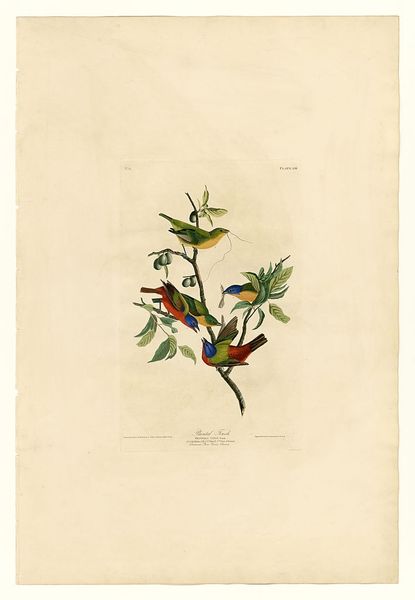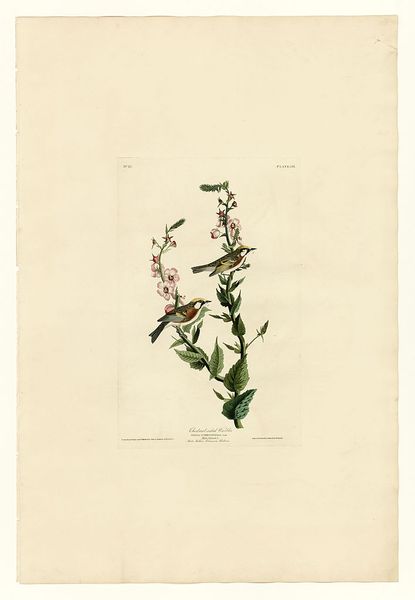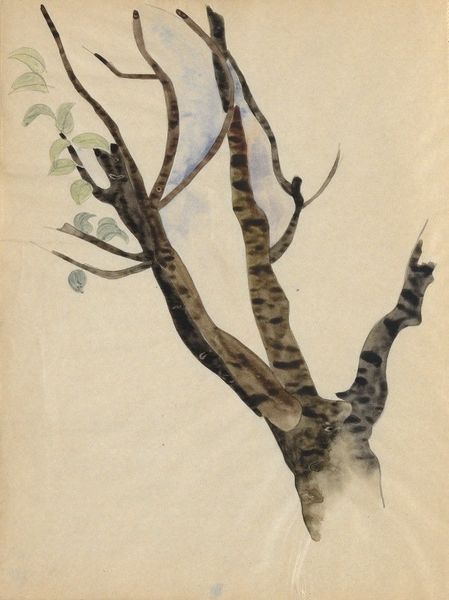
drawing, print, plein-air, watercolor
#
drawing
# print
#
impressionism
#
plein-air
#
landscape
#
figuration
#
watercolor
#
watercolour illustration
#
realism
Copyright: Public domain
John James Audubon created Plate 58, "Hermit Thrush," using a combination of watercolor, graphite, and potentially some form of etching or engraving on paper. Audubon’s images like this one were made through a labor-intensive process. He began by studying birds in their natural habitats. Once he had a suitable specimen, he would mount the bird using wires to maintain a lifelike pose, and then paint it, often in great detail, with watercolor. The final images were transferred to printing plates by engravers. This involved a division of labor, with Audubon providing the artistic vision and the engravers responsible for the technical aspects of reproduction. The result is quite remarkable, but we should also consider the layers of social relations implicit in the image. Audubon depended on the labor of others to translate his vision into a reproducible format. We must also acknowledge the problematic colonial context of this work, where the pursuit of scientific knowledge was often intertwined with exploitation of the natural world. Examining the work’s materials, making, and context allows for a more nuanced understanding, blurring any distinctions between fine art and craft.
Comments
No comments
Be the first to comment and join the conversation on the ultimate creative platform.
